- Yeshshem Name
- Mazel Knowledge
- Revealed Wisdom
- Gematria
- Personal Assistance
- Sound Bites & F.A.Q.
- Donations
- Newsletter
- Contact Us
- Home
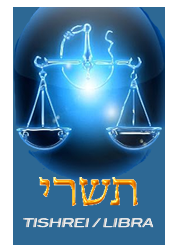
Hilula and Yarzeit for the Hebrew Month of Tishrai - תשרי.
Nineteenth of Tishrai which is - יט תשרי starts Evening of October 3 2023
Rabbi Aaron, the Sadigerer Rebbe, He is the author of the Kedushas Aharon and is also known as that Name. (1913), He is the son Rabbi Yisrael of Sadiger; father of Reb Mordechai Shalom Yosef. He died tragically, just six years after his father’s petira, at the age of 36. Some say his Hilula is 1912.
Rabbi Eliyahu ben Shlomo Zalman, the Vilna Gaon (1720-1797), leader of Lithuanian Jewry, Torah scholar and Kabbalist. At the age of seven he gave his first public discourse and displayed a fully developed intellect. At the age of 35 he was approached by one of the leading sages of that time, Rabbi Yonason Eybschutz, to act as an intermediary in the conflict between him and another great sage, Rabbi Yakov Emden. The Gaon's son testified that for fifty years his father did not sleep for more than two hours in a twenty-four hour period. His breadth of knowledge was amazing. He was capable of stating from memory the number of times any sage was mentioned in any particular book of the Talmud. 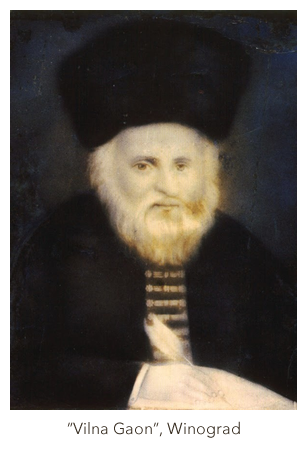 His knowledge of both the revealed and the hidden parts of the Torah was beyond compare. The Gaon considered secular knowledge to be a vital adjunct to Torah study. He was knowledgeable in almost all secular fields and authored books on grammar and mathematics. Among his many writings is Aderes Eliyahu, a commentary on Chumash. He disagreed with some of the Teachings of the Baal Shem Tov, yet stated that without studying Kabbalah it is impossible to learn the Pshat level of Torah properly.
His knowledge of both the revealed and the hidden parts of the Torah was beyond compare. The Gaon considered secular knowledge to be a vital adjunct to Torah study. He was knowledgeable in almost all secular fields and authored books on grammar and mathematics. Among his many writings is Aderes Eliyahu, a commentary on Chumash. He disagreed with some of the Teachings of the Baal Shem Tov, yet stated that without studying Kabbalah it is impossible to learn the Pshat level of Torah properly.
Rabbi Yaakov Yitzchak, ben Rabbi Asher Rabinowitz, the Yid Hakadosh of P’shischa (1766-1813). A talmid of the Chozeh of Lublin, he was the rebbi of Rav Simchah Bunim of P’shischa. Other important disciples of his included Rabbi Menachem Mendel of Kotzk, Rabbi Yitzchak Meir of Ger, Rabbi Chanoch Heinich of Alexander, Rabbi Yitzchak of Vorki and Rabbi Yissachar Ber of Radoshitz. Rabbi Yaakov Yitzchak initiated a new path in Chassidus, the service of G-d through Torah study together with prayer. He thus founded a Polish version of Chassidus, which assigned a greater importance to Torah study and the role of scholars, and started to campaign against the superficiality and ignorance which had developed within Chasidism.
Rabbi Naftoli (Herman) Neuberger, long time administrative head of Yeshivas Ner Yisrael of Baltimore (1918-2005). As the public representative of not only the yeshiva, but much of Baltimore’s Orthodox community for many years, Rabbi Neuberger met often with Jewish and government figures. Born in Hassfurt, a small Bavarian town along the Main River, Rabbi Neuberger was the youngest of Meir and Bertha Neuberger's three children. Four weeks after his bar mitzvah, his father died, in 1935, he left home to study at the Mirrer yeshiva in Poland. In 1938, he immigrated alone to the United States at 20, speaking only German and Yiddish. He enrolled at Ner Yisrael, which had opened 5 years earlier. In 1940, he began working in the yeshiva office. In 1942, Rav Neuberger married Judith Kramer, the youngest of Mrs. Ruderman's four sisters. By the mid-1950s, he was responsible for fund-raising and the yeshiva's physical operation and was responsible for moving the Yeshiva to its current campus. After Rabbi Ruderman's death in 1987, Rabbi Neuberger assumed the title of president. Through his efforts, beginning in 1975, over 800 Iranian immigrants attended Ner Israel -- on full scholarship. The eldest of his five sons, Rabbi Sheftel Neuberger, is vice president of the Yeshiva and was his father's right hand. Besides Sheftel, their other sons are: Isaac, a Pikesville attorney; Rav Shraga Neuberger, a Ner Israel rebbe; Yaakov, a Greenspring attorney; and Rav Ezra Neuberger, a Ner Israel rebbe and dean of its kollel.
Twentieth of Tishrai which is - כ תשר starts Evening of October 4 2023
Rabbi Avraham Yehoshua Heschel of Crakow (1596-1663), son of Rav Yaakov Lubliner and the grandson (through his mother) of Rav Meir Katzenellenbogen.
Rabbi Baruch Yosef of Sudlikov (1884) Son of Rabbi Aryeh Leib of Sudlikov, who was a son-in-law of Rabbi Dovid HaLevi Horowitz, who was a son-in-law of the Degel Machane Ephraim.
Rabbi Yaakov Yosef ben Yehuda Leib, ("Reb Yaybi Saba"), Maggid of Ostra, 1791
Rabbi Shimon of Skrenovitz (1926)
Rabbi Yosef Moshe Addess (1923-1991). Born to Rav Yaakov Addess, he learned at the Porat Yosef yeshiva in the Old City during his youth. There he became very close to the rosh yeshiva, Rabbi Ezra Attia. In 1952, he began to teach in the Tzofiof shul in the Bucharian neighborhood of Yerushalayim. On Friday mornings, he always taught mussar, mainly from the sefer Peleh Yoetz (interesting that its author shared his yahrtzeit). These mussar shiurim were published later by a student, under the title Kochvei Or. He became Rosh Yeshiva, Porat Yosef, Yerushalayim.  His son, Raabbi Yaakov, became rosh kollel of Maalos Yosef, and his son Aaron heads the various chessed projects started by Rav Yosef. He died on the same date that he was born. This is a sign that his personal Tikune was completed. Some say his Hilula is 19th of Tishrai
His son, Raabbi Yaakov, became rosh kollel of Maalos Yosef, and his son Aaron heads the various chessed projects started by Rav Yosef. He died on the same date that he was born. This is a sign that his personal Tikune was completed. Some say his Hilula is 19th of Tishrai
Rabbi Avraham Yissachar Englard, the Sosnovtza Rav/ Radziner Rebbe of Eretz Yisrael (1906-2005). Born in Krimelov to Rabbi Yeshaya, a grandson (and great-grandson) of the Shach, who served as Rav and Av Beis Din in Mondziuv and Sosnovitz (Sosnovtza). He became the son-in-law of the Radziner Rebbe, the Tiferes Yosef. When his father-in-law was nifter, The Rebbe’s son, Rav Shmuel Shlomo became Rebbe. During World War II, he escaped to the forest and joined the partisans; there in the forest, he wore the same clothes for almost two years. After the War, he returned to Sosnovitz, where he served as Rabbi and Av Beis Din. In 1948, he moved to Brooklyn, and in 1952, he accepted an invitation to join Chassidim of Radzin in Eretz Yisrael. He founded Radziner batei medrash in Bnei Brak, Tel Aviv, Haifa, Yerushayalim, Netanya, Petach Tikva, and Holon, and the Sod Yesharim Yeshiva in Yerushalayim. He moved to Crown Heights in 1954, but moved back to Bnei Brak in 1971.
Twenty First of Tishrai which is - כא תשר starts Evening of October 5 2023
This is the Sixth Day of Sukkot - a Day of Chol HaMoed.
Rabbi Eliezer Papo who was born in Sarajevo, Bosnia, in 1785, is considered the exemplary spokesman of the Sephardic musar tradition of the eighteenth century. He promised in his will that, “Whoever comes to my grave in purity after immersing in a mikveh, and prays with a broken heart, I guarantee him that his prayer will be accepted.” As such, his kever on the banks of the Danube in Silestra, Bulgaria, is the destination of hundreds of visitors annually. His talmid muvhak was Rabbi Yoshiyahu Pinto.
An outstanding rabbinic scholar, he was deeply devoted to piety and spirituality and authored books of halacha, homiletics, and musar, as well as being profoundly committed to kabbalah. One of his noted works is Beit Tefillah, which is filled with many different prayers for specific situations, including one for the welfare of the Jewish people.
Rabbi Papo's Hilula occurs on the sixth day of Sukkot, and he discusses in his work Pele Yoetz the importance of Hol Ha'mo'ed. He cites the comment of Hazal that whoever disgraces the "Mo'adot" - referring to Hol Ha'mo'ed - forfeits his share in the world to come. The Rabbi lamented that many people are unaware of the severity of certain Misvot - such as failing to celebrate Hol Ha'mo'ed - and thus unwittingly lose their share in the next world. He urged Jews to consult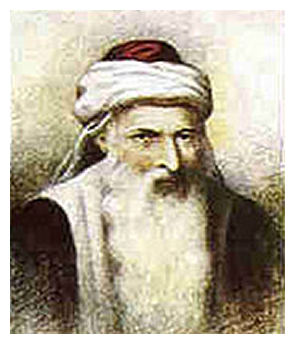 a Rabbi to learn what is permissible and what is forbidden. As a result of not consulting a Rabbi, he observed, many people do not even eat, or eat very little, on Hol Ha'mo'ed, whereas Halacha requires eating and drinking more festively on Hol Ha'mo'ed than on ordinary weekdays. The Pele Yoetz urges all people who are "concerned for their souls" to study from books or from a Rabbi the laws of Hol Ha'mo'ed, so they know which activities are forbidden, and to eat and drink more festively on Hol Ha'mo'ed, to ensure that they do not forfeit their share in the eternal life.
a Rabbi to learn what is permissible and what is forbidden. As a result of not consulting a Rabbi, he observed, many people do not even eat, or eat very little, on Hol Ha'mo'ed, whereas Halacha requires eating and drinking more festively on Hol Ha'mo'ed than on ordinary weekdays. The Pele Yoetz urges all people who are "concerned for their souls" to study from books or from a Rabbi the laws of Hol Ha'mo'ed, so they know which activities are forbidden, and to eat and drink more festively on Hol Ha'mo'ed, to ensure that they do not forfeit their share in the eternal life.
More generally, the Pele Yoetz adds, a God-fearing person will be sure to set aside regular time for Torah learning, to avoid denigrating the Torah. The Rabbi taught that he who fails to learn Torah is called "Nazuf" - rejected by the Almighty, and that this is especially important on Hol Ha'mo'ed, which is a time of judgment. The culmination of this judgment occurs on Hoshana Rabba, the final day of Sukkot. Therefore, Rabbi Popo taught that throughout Hol Ha'mo'ed, and certainly on Hoshana Rabba, that we must perform as many Misvot as possible, especially Torah study, in our effort to secure a favorable judgment. The Pele Yoetz concludes with "This [discussion] suffices for one who has a heart."
In spite of the brevity of his life, Rabbi Papo achieved depth and breadth in his rabbinic 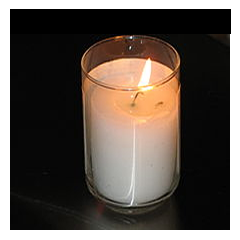 scholarship, and left to posterity a significant literary legacy. His attitude was one of acceptance: whatever happened was for the best since it was God's will. Suffering and adversity were to be received with equanimity; they provided opportunities to demonstrate true faith in God and to repent.
scholarship, and left to posterity a significant literary legacy. His attitude was one of acceptance: whatever happened was for the best since it was God's will. Suffering and adversity were to be received with equanimity; they provided opportunities to demonstrate true faith in God and to repent.
He also taught that it was wrong to be overly concerned with earning a livelihood. One had to work for a living, not relying on a miracle to sustain him and his family, but income is determined by God. If God wants someone to be poor, he will be poor no matter how hard he works. And if God wants him to be rich, he will be rich even if he does not work hard. We are all obliged to devote some time to making our living but must realize that our level of success is determined by God.
Rabbi Papo lived and worked in Bucharest as chief rabbi, physician and philosopher. During the Russian-Turkish War in 1829 he arrived in Selestria, Bulgaria, where he rescued the local population from a cholera epidemic, creating quarantine "belts" and infirmaries. He then served as rabbi of the community of Selestria for the rest of his life, and died there in 1826 at the age of forty-one.
He called for a life of piety and acceptance of God, and demanded total allegiance to rabbinic tradition. He stressed the need to live according to traditional patterns and preferred the traditionalism of Moslem lands to the modernity of Europe. His ultimate focus was not on life in this world, but on the world to come.
Rabbi Menachem Mendel of Premishlan (1777?). a disciple of the Baal Shem Tov as well as of the Maggid of Mezritch, and a lofty soul. He became the leader of thousands of chassidim in Russia and Lithuania.
When he was 9, his father took him to the Baal Shem Tov for a bracha, and later in life he would travel to Mezhibuzh from time to time to see his Rebbe. Menachem's unusual abilities were apparent already at the age of 9. He quickly grasped his studies, and soon, there was no melamed available to teach him, so his father sent him to a veteran melamed known for his brilliance, Rav Dovber, Maggid of Mezritch. This melamed was lame and endured much suffering, but his teaching abilities were extraordinary and Menachem studied Torah with him. R’ Dovber loved his young talmid. He soon saw how talented he was and he lovingly shared his Torah treasures with him.
Despite the fact that inwardly Mendel was utterly battul and humble, all of his acquaintances and teachers knew that he was very particular about how he dressed and how he looked. His clothing was always immaculate and dignified, his hat just-so, and his hair arranged carefully. When as a child Menachem first arrived at the Baal Shem Tov's Shabbat 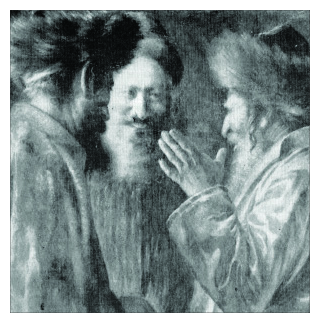 celebration later than others, having taken time to dress properly, the Baal Shem Tov turned to him and when he saw the pure-faced child, his eyes lit up. That Shabbos was an uplifting one for the Baal Shem Tov and his disciples. The boy observed the goings-on. The Maggid went back to the Baal Shem Tov’s room after this observance to say goodbye. He also wanted guidance for how to proceed with his precocious talmid. The Baal Shem Tov said, “I see a boy who is truly lowly in his own eyes,” and indicated that there was nothing to worry about.
celebration later than others, having taken time to dress properly, the Baal Shem Tov turned to him and when he saw the pure-faced child, his eyes lit up. That Shabbos was an uplifting one for the Baal Shem Tov and his disciples. The boy observed the goings-on. The Maggid went back to the Baal Shem Tov’s room after this observance to say goodbye. He also wanted guidance for how to proceed with his precocious talmid. The Baal Shem Tov said, “I see a boy who is truly lowly in his own eyes,” and indicated that there was nothing to worry about.
In Adar of 5537 / 1777, Rabbi Menachem Mendel left for Eretz Yisroel with hundreds of followers and their families. En route he passed through Polnoye where he stayed in a local inn, and went to visit R’ Yaakov Yosef who lived there. R’ Yaakov Yosef had been the one to put the Baal Shem Tov’s teachings into writing. Said R’ Yaakov Yosef, “In the story, it was hinted that a young man would go along with you whose name goes from one end of the world to the other. Where is he?”. A pleased look could be seen on R’ Mendel’s face. He turned towards the entourage of Chassidim who had accompanied him and pointed to a young man. “This is the young man who is accompanying me. His name is Shneur Zalman …”
Rabbi David Moshe Friedman, the first Chortkover Rebbe, the 5th son of Rabbi Yisrael of Ruzhin (1828-1903). He moved to Chortkov in 1865 to become Rabbi, a position he kept for over 40 years. He is the author of Divrei Dovid. Upon his death in 1904, his son Reb Yisrael succeeded him.
Rabbi Dovid Moshe of Chortkov (1904) son of Rabbi Yisroel of Ruzhin.
Rabbi Yechiel Michel Margliyot student of the Baal Shem Tov
Rabbi Avraham Shmuel Binyamin Sofer, the Cheshev Sofer (1961) [or sometimes called the Daas Sofer]. He is a descendant of the Chasam Sofer.
Rabbi Yaakov Aryeh Twersky, the Trisker Rebbe (1979)
Twenty Second of Tishrai which is - כב תשר starts Evening of October 6 2023
Rabbi Aharon Halevi Hurvitz of Stroshel, primary student of the Alter Rebbe of Lubavitch, author of Avodas Halevi and Shaar Hayichud (1828)
Rabbi Shraga Feivel of Gritza (1848)
Rabbi Moshe Shmuel Glasner (1857-1924). Rabbi Moshe, a great-grandson of the Chasam Sofer, was born in Pressburg and later moved with his family to Klausenberg, where his father served as Rabbi. Rabbi Moshe succeeded his father in that post in 1878 and filled it until 1923, when he settled in Yerushalayim. Rabbi Moshe's best known work is Dor Revi'i on Meseches Chullin. His other works include responsa and a Torah commentary.
Rabbi David Shapiro of Sonik-Dinov (1933).
Rav Moshe Yaakov Hakohen Revikov (Ribikov), tzadik nistar, the “sandlar (shoemaker) of Tel Aviv” (1966) some think his Hilula is 1967.
Nadvorna Rebbe of Petach Tikva (2002)
Twenty Third of Tishrai which is - כג תשר starts Evening of October 7 2023
Rabbi David Jungreis, Rosh Av Beis din Yerushalayim (1898-1971). Rav Dovid's grandfather was Rav Moshe HaLevi Jungreis, a student of the Ktav Sofer and the 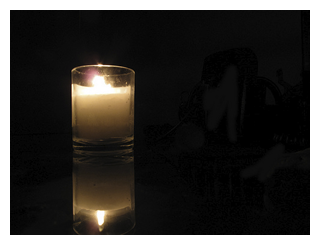 Av Beis Din of Kashoi, while his father was Rabbi Baruch Reuven Shlomoh, the founder of the Eidah HaChareidis. He had married Rebbetzin Miriam Pu'ah, a daughter of Rabbi Asher Zussman. In 1931, at the age of 33, he was appointed dayan in the Eidah HaChareidis' beis din, joing Rav Yosef Chaim Sonnenfeld. His knowledge was so vast, the Satmar Rav once said, "If Rav David is here, I don't need any sefer." Although he was childless, Rav David's insightful drashos, which were compiled by his students into a sefer, titled Ohr David.
Av Beis Din of Kashoi, while his father was Rabbi Baruch Reuven Shlomoh, the founder of the Eidah HaChareidis. He had married Rebbetzin Miriam Pu'ah, a daughter of Rabbi Asher Zussman. In 1931, at the age of 33, he was appointed dayan in the Eidah HaChareidis' beis din, joing Rav Yosef Chaim Sonnenfeld. His knowledge was so vast, the Satmar Rav once said, "If Rav David is here, I don't need any sefer." Although he was childless, Rav David's insightful drashos, which were compiled by his students into a sefer, titled Ohr David.
Rabbeinu Chanoch ben Rabbeinu Moshe of Cordova, one of the four Shevuyim (1000)
Rabbi Menachem Mendel of Linsk, father of Rav Naftali Tzvi of Ropshitz (1802).
Twenty Fourth of Tishrai which is - כד תשר starts Evening of October 8 2023
Rabbi Moshe of Dolina student of the Baal Shem Tov
Rabbi Eliyahu Guttmacher, Av Beis din Greiditz (1796-1874). Born near Posen (Poznan) in eastern Germany (today, Poland) he became, at age 19, a student of Rabbi Akiva Eiger for four years. Rabbi Guttmacher published several pamphlets describing his ideas about the Redemption and the return to Eretz Yisrael. He also left behind many manuscripts on "traditional" Torah subjects, and some of his commentaries are published in the back of the standard Vilna edition of the Talmud.
Rabbi Yaakov Yosef of Polnoye (1669-1781 some say 1783). Rabbi Yaakov Yosef was one of the first and most dedicated of the disciples of the founder of Chassidut, the Holy Baal Shem Tov. While still a young man, he was appointed Rabbi of Sharogrod, and was already an accomplished scholar when he attached himself to the Baal Shem Tov. His discipleship of the Baal Shem Tov engendered much controversy, however, and he was expelled from his position on a Friday afternoon in 1748. He had been the Rabbi of Sharogrod for several years at that time.
In several of his responsa, which he wrote in Rashkov, where he took up residence after his banishment from Sharogrod, he reveals the suffering which he had undergone. Later, he was appointed rabbi in Nemirov, a center of Hasidism, where he practiced daily fasting for five years. Then in 1770 he became the Rav of Polnoye.
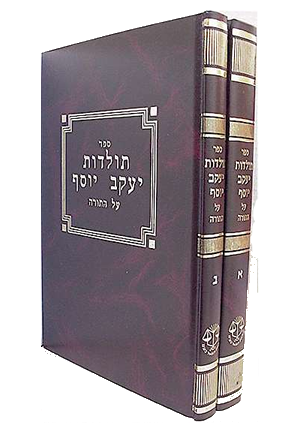 The Rabbi is one of the foremost sources for teachings from the Baal Shem Tov. His book, Toldos Yaacov Yosef, (published on 1780), was the first chassidic work ever published. In it he repeats the phrase, "I have heard from my teacher", 249 times. He also authored Ben Porat Yosef, Tzofnat Paane'ach, and Ketonet Passim. Rav Yaakov was also somewhat known for his abrupt temperament, yet his teachings on the Zaddik, the saint-mystic and holy leader, provide an example of attainment of the highest degree of spirituality, while also exemplifying the piety of a respected leader at the center of the community. Although the exact year of his birth is not known, it is believed that he lived more than 110 years.
The Rabbi is one of the foremost sources for teachings from the Baal Shem Tov. His book, Toldos Yaacov Yosef, (published on 1780), was the first chassidic work ever published. In it he repeats the phrase, "I have heard from my teacher", 249 times. He also authored Ben Porat Yosef, Tzofnat Paane'ach, and Ketonet Passim. Rav Yaakov was also somewhat known for his abrupt temperament, yet his teachings on the Zaddik, the saint-mystic and holy leader, provide an example of attainment of the highest degree of spirituality, while also exemplifying the piety of a respected leader at the center of the community. Although the exact year of his birth is not known, it is believed that he lived more than 110 years.
Rabbi Elchonon Sorotzkin, Chairman of Vaad Hayeshivos; son of Rav Zalman Sorotzkin (author of Oznayim Le-Torah).
Rabbi Avraham Yehuda Leib ben Rabbi Pnchos Zelig HaKohen Schwartz, the Kol Aryeh (1883)
Rabbi Chaim Zanvil Abramowitz Ben Rabbi Moshe Abramowitz, the Ribnitzer Rebbe, Monsey (1995); attended Kishinev Yeshiva in the 1920s and sat at the court of Rabbi Avraham Mattisyahu of Sthefanesht in Romania. After emigrating from Russia in 1973, he lived in Yerushalayim and Monsey, NY. It is known that from the 1930s until the end of his life he fasted on all days when it is permitted to do so under Jewish law. He is considered a Great tzadik and Baal Mofet, he was a talmid of the Stefanester Rebbe. He lived in communist USSR until 1970, then moved to Eretz Yisroel and then settled in the USA. He lived the last years of his life in Monsey, NY. He is Buried in the Vizhnitzer Cemetery in Monsey, NY.
After emigrating from Russia in 1973, he lived in Yerushalayim and Monsey, NY. It is known that from the 1930s until the end of his life he fasted on all days when it is permitted to do so under Jewish law. He is considered a Great tzadik and Baal Mofet, he was a talmid of the Stefanester Rebbe. He lived in communist USSR until 1970, then moved to Eretz Yisroel and then settled in the USA. He lived the last years of his life in Monsey, NY. He is Buried in the Vizhnitzer Cemetery in Monsey, NY.
Rav Chaim Shaul Kaufman, Rosh Yeshiva of Yeshiva Tiferes Yaakov of Gateshead (1938-2005). Born in Berlin as the youngest of 8 children, in July 1939 he came to Gateshead in the U.K. where there was a sizeable community of Jewish refugees from Europe. He married Leah Nagel of Antwerp.
Twenty Fifth of Tishrai which is - כה תשר starts Evening of October 9 2023
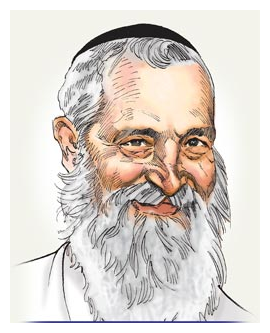 Rabbi Levi Yitzchak of Berdichev (1740-1810 - Some say 1809). At the suggestion of his mentor, Reb Smelke of Nikolburg, he traveled to Mezritch and became a close disciple of the Magid of Mezritch. Following posts at Zelichov and Pinsk, he spent the last 25 years of his life in Berdichev. His teachings are contained in the posthumously published Kedushas Levi. He is traditionally mentioned with his mothers name, Sarah Sosha.
Rabbi Levi Yitzchak of Berdichev (1740-1810 - Some say 1809). At the suggestion of his mentor, Reb Smelke of Nikolburg, he traveled to Mezritch and became a close disciple of the Magid of Mezritch. Following posts at Zelichov and Pinsk, he spent the last 25 years of his life in Berdichev. His teachings are contained in the posthumously published Kedushas Levi. He is traditionally mentioned with his mothers name, Sarah Sosha.
Rabbi Moshe Sofer, the Chasam Sofer, Pressburg (1762-1839), learned under Rabbi Nosson Adler of Franfort and Rabbi Pinchas Halevi Horowitz, the Baal Haflaah (a talmid of the the maggid of Mezeritch). He was born in Frankfurt Am Mein. His first position was as a Rabbi in Boskovitz in Moravia. He married the daughter of the rabbi of Prosnitz and was supported by his brother-in-law, Rabbi Hirsch. Unfortunately, Rabbi Hirsch eventually lost all his money, and the Chasam Sofer took a position as rav in the Moravian city of Dresnitz. After five years in Dresnitz, Rabbi Moshe moved to Mattersdorf. The Chasam Sofer was appointed Rabbi of Pressburg in Tishrei of 1806, and he occupied that position for 33 years. After the petira of his first wife, Rabbi Moshe married the daughter of Rabbi Akiva Eiger. She bore the previously childless Chasam Sofer 7 daughters and 3 sons.
Rabbi David Mattisyahu Rabinowitz, Biala Rebbe- Bnei Brak (1997) son of the Chelkas yehoshu, Rabbi Yechiel Yehoshua of Biala
Rabbi Yehuda Leib the Magid of Ostraha Student of the Baal Shem Tov
Rabbi Benyamin of Zlazitz student of the Baal Shem Tov
Rabbi Yom Tov Lipman Helprin (Heilprin), author of Kedushas Yom Tov. (1794)
Twenty Sixth of Tishrai which is - כו תשר starts Evening of October 10 2023
Rabbi Aharon of Zhitomer, author of Toldos Aharon (1816). A talmid muvhak of Rabbi Levi Yitzchak of Berditchev, he succeeded Rabbi Zev Wolf of Zhitomir (the Ohr Hemeir) upon the appointment of the Kedushas Levi. His divrei Torah were written down by one of his closest talmidim, Rabbi Levi of Zhitomir, after he heard them, at the end of every Shabbos and Yom Tov.
Rabbi Asher ben Rabbi Ahron "HaGadol", of Karlin, the Stoliner Rebbe (1760-1828), son of the Rebbe Aharon HaGadol of Karlin. When his father passed away, he was raised by his successor Rebbe Shlomo Karliner who became one of his main influences. Rebbe Asher later settled in Stolin. Some say his Hilula is 1826
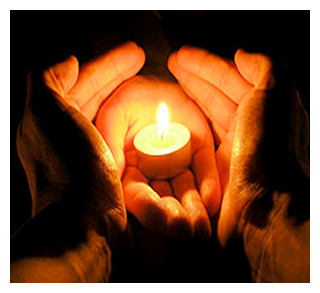 Rabbi Yehuda Yudel Rosenberg (1859-1935). Born in Skaraschev, a small town near Radomsko, Poland. He served as Rav in Tarlow, at age 25, he was appointed Av Beis Din. In 1903, he published Yados Nedarim, a commentary on Rashi and Ran to meseches Nedarim. In 1905, he published Shaarei Zohar Torah, an attempt to organize for the verses of the Torah what the Zohar said on that verse.
Rabbi Yehuda Yudel Rosenberg (1859-1935). Born in Skaraschev, a small town near Radomsko, Poland. He served as Rav in Tarlow, at age 25, he was appointed Av Beis Din. In 1903, he published Yados Nedarim, a commentary on Rashi and Ran to meseches Nedarim. In 1905, he published Shaarei Zohar Torah, an attempt to organize for the verses of the Torah what the Zohar said on that verse.
Twenty Seventh of Tishrai which is - כז תשר starts Evening of October 11 2023
Rabbi Nosson Tzvi ben Rabbi Yerachmiel Moshe Kenig (1997), Rosh Kollel Breslov in Bnei Brak (Some say his Hilula is 17 Tishrei)
Rabbeinu Yitzchak Hazaken bar Shmuel (the Ri Hazaken), of the Baalei Tosfos (1120-1200). The Ri’s maternal grandfather was Rashi’s son-in-law, Rabbi Meir ben Shmuel. He was thus a nephew and a disciple of Rabbeinu Tam and the Rashbam (both sons of Rabbi Meir ben Shmuel). He was also a grandson of one of Rashi's leading students, Rabbi Simcha of Vitry (author of Machzor Vitry). The Ri directed the yeshiva at Ramerupt after 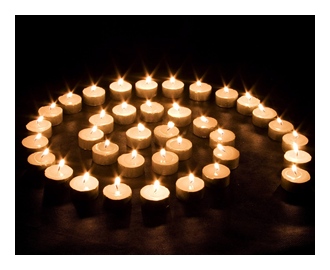 Rabbeinu Tam moved to Troyes. Thereafter, he founded the yeshiva at Dampierre. The Ri Hazaken succeeded Rabbenu Tam as head of the academy in Ramerupt, France. Among Rabbi Yitzchak's students were Rabbi Shimshon of Sens (who edited many of our Tosefos, wrote important works in his own right, and led 300 families to settle in Eretz Yisrael in 1211), Rabbi Yitzchak ben Avraham ("Ritzba"), and Rabbi Baruch, author of Sefer Haterumos. The Ri also was a kabbalist who lived an ascetic life and observed two days of Yom Kippur (presumably for the same reason that Jews in the diaspora observe two days of other holidays). Ri had at least two sons, both of whom died in his lifetime: Rabbenu Elchanan and Rabbenu Shlomo. Some say his Hilula is 1188.
Rabbeinu Tam moved to Troyes. Thereafter, he founded the yeshiva at Dampierre. The Ri Hazaken succeeded Rabbenu Tam as head of the academy in Ramerupt, France. Among Rabbi Yitzchak's students were Rabbi Shimshon of Sens (who edited many of our Tosefos, wrote important works in his own right, and led 300 families to settle in Eretz Yisrael in 1211), Rabbi Yitzchak ben Avraham ("Ritzba"), and Rabbi Baruch, author of Sefer Haterumos. The Ri also was a kabbalist who lived an ascetic life and observed two days of Yom Kippur (presumably for the same reason that Jews in the diaspora observe two days of other holidays). Ri had at least two sons, both of whom died in his lifetime: Rabbenu Elchanan and Rabbenu Shlomo. Some say his Hilula is 1188.
Rabbi Ephraim Zalman Shor, author of Tevuos Shor (1633) ( Some say his Hilula is 28 Tishrei.)
Rabbi Elazar Rokeach of Amsterdam, the Maaseh Rokeah (1741)
Twenty Eighth of Tishrai which is - כח תשר starts Evening of October 12 2023
Rabbi Ephraim Zalman Shorr, author of Tevuos Shor (1732)
Rabbi Lieber "HaGadol" of Berdichev His real name was Rabbi Eliezer ben Rabbi Avraham (1770) one of the talmidim of the Baal Shem Tov. He was a great-grandson (ben acher ben) of Rabbi Shimshon Ostropolier and was also a descendent of the Megaleh Amukos.
Rabbi Nachman Tzvi HaLevi of Kolomaya, son of Rabbi Yitzcak, Rav of Kolomaya (1829)
Rabbi Shmuel Landau of Prague, second son of the Noda BeYehuda (1837)
Rabbi Avraham Eiger, the Admor of Lublin (1914-2000; Some say 1916-2002). He was named after his father, the author of Shevet MiYehuda, who had died just three months before his birth on erev Rosh Chodesh Iyar. He joined a long line of admorim stretching back through his grandfather, Rabbi Shlomo Eiger, and his great- grandfather, the great Rabbi Akiva Eiger, all the way to the founder of the dynasty, Rabbi Leibele Eiger, also known as the Toras Emes. He survived the war by escaping to Shanghai. In 1949, he moved to Eretz Yisrael, settling in Yerushalayim for a year, then setting up the Lubliner Beis Chassidim in Tel Aviv. In 1955, he moved to Bnei Brak, and in 1963, he set up his Beis Midrash in the center of Zichron Meir.
Twenty Ninth of Tishrai which is - כט תשר starts Evening of October 13 2023
Don Yitzchok Abarbanel (1519 some say 1508)
From Jewish Treats
The Great Don
Few people in Jewish history understood the “wheel of fortune*” as well as Don Isaac Abrabanel (Lisbon, 1437 - Venice, 1508).
Born into a prominent, wealthy Portugese family, Don Isaac achieved great success over and over again through his extraordinary talent and brilliance. Professionally, Abrabanel was a minister in the court of various kings and a financial genius. He was the highly regarded treasurer of King Afonso V of Portugal until 1483, when Afonso’s successor, Joao II, accused him of conspiracy. Abrabanel was saved by a last minute warning he received that the king planned to have him beheaded.
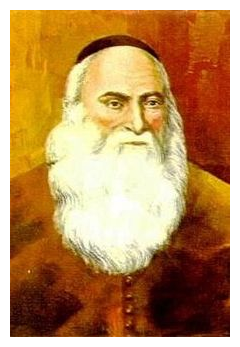 His personal fortune confiscated, Abrabanel fled to Toledo with the intention of dedicating himself to Torah study. Before the end of his first year, however, he came to the notice of King Ferdinand and Queen Isabella. Despite the tremendous revenue he managed to generate for them, Abrabanel was unable to convince (i.e. bribe) them not to expel the Jews. In 1492, with only a minute portion of his once vast wealth, Abrabanel headed for Naples.
His personal fortune confiscated, Abrabanel fled to Toledo with the intention of dedicating himself to Torah study. Before the end of his first year, however, he came to the notice of King Ferdinand and Queen Isabella. Despite the tremendous revenue he managed to generate for them, Abrabanel was unable to convince (i.e. bribe) them not to expel the Jews. In 1492, with only a minute portion of his once vast wealth, Abrabanel headed for Naples.
In Naples he once again became a royal advisor, until he was forced to flee, together with King Alfonso II, when Charles of France captured Naples. He remained with the exiled king until the king’s death, after which Abrabanel, penniless, headed to Venice. The cycle repeated one last time, as the Venetian rulers sought his sage advice and Abrabanel became one of their leading statesmen until his death in 1508.
In addition to his talented statesmanship, Abrabanel was also a renowned Biblical scholar and Jewish philanthropist...and that is enough to merit a second look for more information on Abrabanel’s next yahrtzeit, 29th Tishrei 5772.
Sometimes a person is at the top of the wheel; at other times at the bottom.
Rabbi Meir ben Rabbi Levi Yitzchok of Berditchev
Shimon Hatzadik of the Anshei Knesset Hagedola, Born 350 BCE to 300 BCE
Rabbi Menachem Mendel of Vizhnitz (1830-1885), author of Tzemach Tzedek. Named for His grandfather, Rav Menachem Mendel Hager of Kossov (1768-1825), founder of the Vizhnitz dynasty. Born to Rabbi Chaim of Kossov, who betrothed him to Miriam, daughter of Rabbi Yisrael of Rizhin, when his son was only 6 years old. The wedding took place in 1844. In 1854, he moved to Vizhnitz, a small town at the foot of the Carpathian mountains, 30 miles from the Romanian border. Shortly thereafter his father was niftar. He assumed the mantle of Vizhnitz when he was only 24. He was succeeded by his son Rabbi Baruch (1845-1893).
Rabbi Akiva Glasner (1956). A descendant of the Chasam Sofer and of Rabbi Akiva Eiger, Rabbi Glasner succeeded his father, Rabbi Moshe Shmuel Glasner, as Chief Rabbi of Klausenberg, Rumania, in 1922, and served there until the deportation of the Jews in 1944. 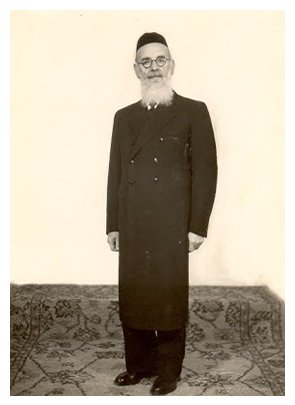 He was deported to Bergen-Belsen, but was saved from there on the famous "Kasztner train." (Rudolf Kasztner was a non-religious Hungarian Zionist who struck a deal with Adolf Eichman to save some 1,700 Jews in exchange for trucks. Years later, an Orthodox Israeli journalist accused Kasztner of acting improperly, and Kasztner sued for libel. After a celebrated trial, Kasztner lost. He was exonerated on appeal, but only posthumously, having been murdered in 1957. Among those saved by Kasztner was Rav Yoel Teitelbaum, the Satmar Rebbe) After the War, Rav Glasner lived in Zurich until his death at age 71. His works include: Dor Dorim and Ikvei Hatzon.
He was deported to Bergen-Belsen, but was saved from there on the famous "Kasztner train." (Rudolf Kasztner was a non-religious Hungarian Zionist who struck a deal with Adolf Eichman to save some 1,700 Jews in exchange for trucks. Years later, an Orthodox Israeli journalist accused Kasztner of acting improperly, and Kasztner sued for libel. After a celebrated trial, Kasztner lost. He was exonerated on appeal, but only posthumously, having been murdered in 1957. Among those saved by Kasztner was Rav Yoel Teitelbaum, the Satmar Rebbe) After the War, Rav Glasner lived in Zurich until his death at age 71. His works include: Dor Dorim and Ikvei Hatzon.
Rabbi Shmuel Tzvi Danziger, Alexander Rebbe (1923). The son of Rabbi Yechiel Danziger and brother of Rabbi Yerachmiel Yisrael Yitzchak Danziger (1853-1910). Rabbi Shmuel authored Tiferes Shmuel. His son, Rabbi Yitzchak Menachem Mendel Danziger (1880-1943; author of Akeidas Yitzchak) succeeded him as Rebbe.
Rosh Chodesh Mar Chesvan which is Thirtieth of Tishrai which is - ל תשר starts Evening of October 14 2023
Rabbi Tzvi Hirsh Chayos, the Maharatz Chayos, Rav of Zolkov (1805-1855 some say 1856). Born in Brody to Rabbi Meir Chiyus. He was a descendent of Rabbi Yitzchak Chiyus, the Zera Yitzchak. 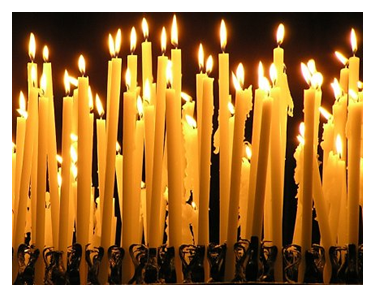 The family could trace their lineage back to David Hamelech. He received smicha at the age of 21 from Rabbi Ephraim Zalman Margulies, Rabbi of Brody. Two years later, he was appointed Rabbi of ZolokovaIn 1854, he became Rav of Kalisch. His was the author of Sheilos U’teshuvos Maharatz, Atreres Tzvi, and Divrei Horaa. His thoughts on Shas are printed in the back of Geamaras used today. Rabbi Tzvi Hirsch’s son. Rav Yitzchak, was mechaber of the sefer Siach Yitzchak on maseches Makkos.
The family could trace their lineage back to David Hamelech. He received smicha at the age of 21 from Rabbi Ephraim Zalman Margulies, Rabbi of Brody. Two years later, he was appointed Rabbi of ZolokovaIn 1854, he became Rav of Kalisch. His was the author of Sheilos U’teshuvos Maharatz, Atreres Tzvi, and Divrei Horaa. His thoughts on Shas are printed in the back of Geamaras used today. Rabbi Tzvi Hirsch’s son. Rav Yitzchak, was mechaber of the sefer Siach Yitzchak on maseches Makkos.
Rabbi Moshe from Shershov (1826)
Rabbi Avraham David Wahrman of Butchatch (1771-1840). Born in Nadvorna, Galicia (today, in the Ukraine). In addition to his father, Avraham David also studied under his uncle Rabbi Yehoshua Charif. At age ten, Avraham Dovid became engaged to the daughter of Rav Zvi Hirsch Kara of Butchatch, and he moved to that town to study under his future father-in-law. Beginning in 1791, Rabbi Avraham David served as rabbi of Yazlowitz for 24 years. In 1814, Rabbi Zvi Hirsch Kara died, and Rabbi Avraham David was offered the rabbinate of Butchatch in his place. It was there that he spent the remainder of his days. His best known works are Da'as Kedoshim on parts of Shulchan Aruch Yorah Deah, and Eishel Avraham on Shulchan Aruch Orach Chaim. The latter work is printed in the back of standard editions of the Shulchan Aruch.
© 2024 www.yeshshem.com All rights reserved. Site development by Eltitude

